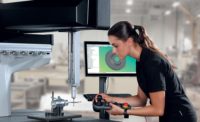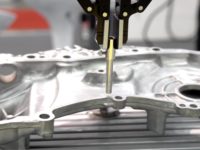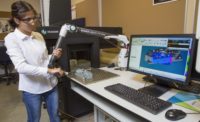The quality norms of the past are being shattered by another evolution of CMM technologies arriving on the scene. The reason? Manufacturing is changing at its core. From the increased development of digital capabilities to new and more efficient materials, manufacturers now have the ability to improve process efficiencies, develop new markets, or innovate their own current product offering. With all of this progress, it was inevitable that quality inspection would also need to follow the industry trends. Looking beyond the quality room, metrology device manufacturers had to realize the core needs of a manufacturing business as an organization, and ensure information provided by CMMs and metrology devices benefits their everyday operations.
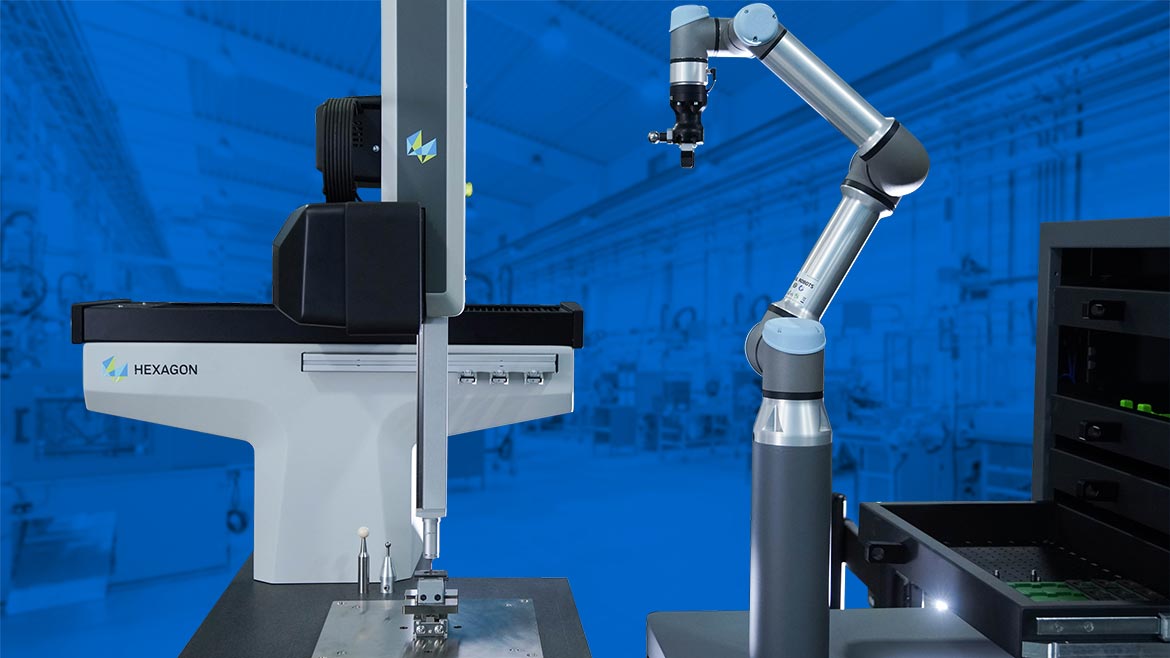
MI TEMPO drawer open robot with TIGO SF-1 Image Source: Hexagon Manufacturing Intelligence
Not An Island Unto Itself
Digital transformation is a common term used these days with several different meanings. There are even more opinions about how it should be handled. Each department across the scope of manufacturing operations has their own ideas of what digital transformation looks like. But there is one commonality amongst them all: the need for collaboration and information exchange between systems and people across the organization.
In the quality department, digital transformation can begin by simply connecting measurement systems together and giving people easy access to use, act upon and share that information. How does quality control play an important role in delivering a more connected, analytical and collaborative way of working? The traditional argument for investing in quality control is “it’s the cost of doing business.” Quality control (QC) performs the essential function of ensuring customers receive the quality they paid for. Inspection also guarantees a manufacturer has complied with industry regulations. And the QC process is designed to spot errors quickly through regular inspection routines to reduce waste and the need for rework, thereby lowering costs and raising throughput. All of these activities can be – and even today often are — performed within a silo.
However, any manufacturer that wants to reap the benefits of digital transformation needs to rapidly feed real-time quality data into design, engineering and production systems. Only in this manner can they enable fast, intelligent improvements to product development and manufacturing based on an understanding of physical reality as well as virtual designs.
Today, the data collected from metrology equipment like CMMs can provide richer insights when connected with the right tools. Data delivered through a CMM can provide insights as simple as whether a part is good or bad, or it can provide sophisticated intelligence such as identifying which machine tool will require maintenance soon. By connecting metrology devices to additional tools like statistical process analysis software or environmental monitoring sensors, the data output provides a more holistic look at the production lifecycle and transforms more reactive tasks into proactive or event predictive tasks.
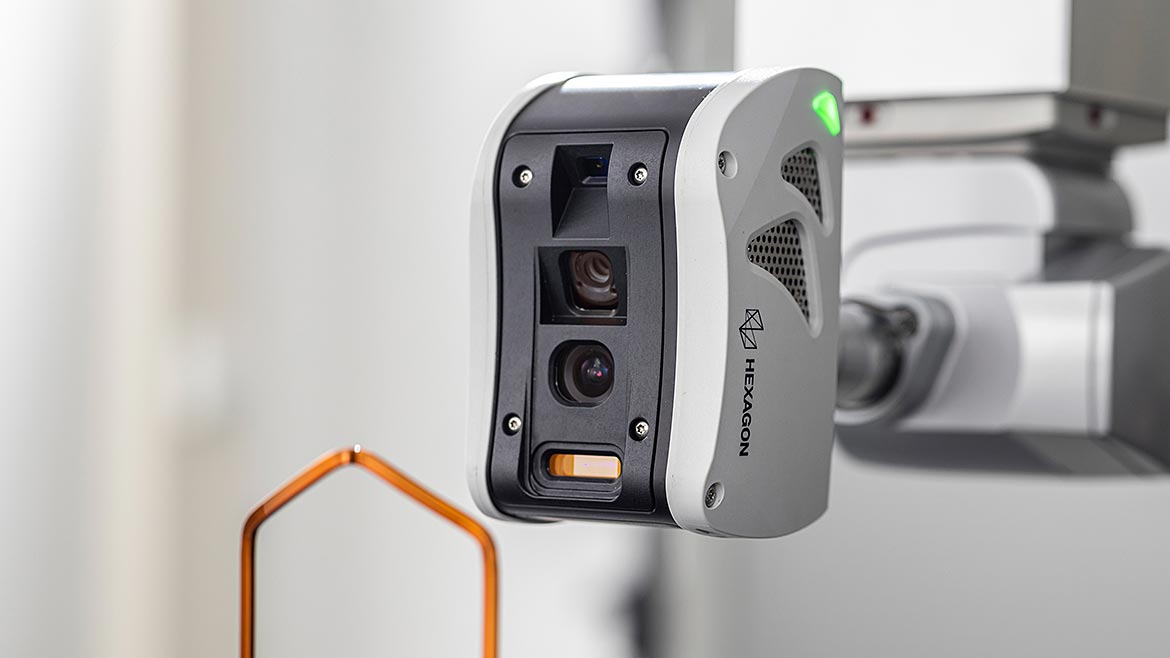
This all-in-one laser scanner transforms a coordinate measuring machine into an optical multisensor system, combining speed, accuracy and flexibility to streamline the measurement of complex surfaces and workpieces. Image Source: Hexagon Manufacturing Intelligence
The Role Of The CMM In Continuous Improvement
Speaking of data, the components used on and around CMMs today allow them to do more than ever before in terms of continuous improvement. In fact, the data collected from CMMs nowadays provides valuable input for design engineers in the process of developing new products or redesigning existing products. Collecting complete surface profiles in less time with better accuracy is a giant leap beyond CMMs of decades past. The new CMMs of the future will not only make the roles within quality more efficient but allow quality professionals to do more by having an integral role within the entire production chain.
Conventional wisdom suggests the only way to improve part measurement results is to measure 100% of the entire part and a high number of parts as well. However, this approach can lead to strained resources, high cost (equipment, resources, time) and maintains the notion that quality is typically considered a major bottleneck.
What if there was a way to measure less, yet maintain assurance that the part was good? Digital measurement results can drive stable processes with much less variation. New generation CMMs, when combined with statistical analysis tools, have the capacity to measure the right features, at the right time, with the right equipment. This combination of technologies can support businesses with high precision demands, continuous improvement programs and support new product introductions with a high degree of success. For manufacturers focused on process stability and continuous improvement, CMM measurement data and statistical analysis provide the ultimate source of truth, resulting in more efficient processes, reduced measurement efforts and waste reduction.
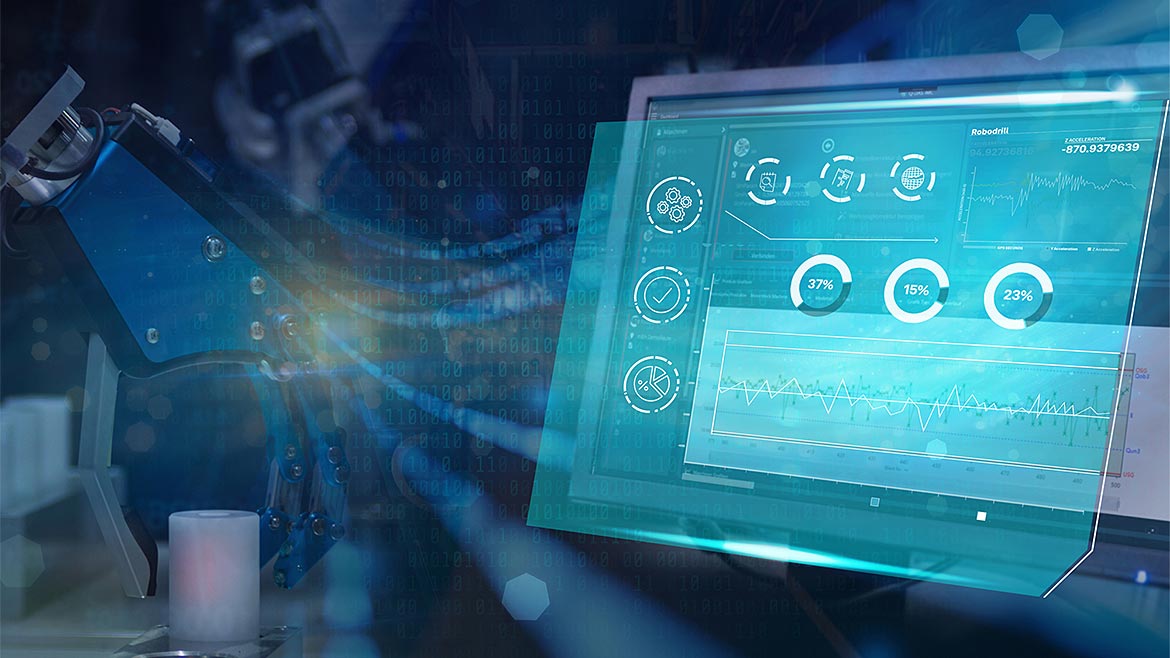
This is a software program that provides the link between the CMM, machine measurement and external systems for greater insight and control over the production process. Image Source: Hexagon Manufacturing Intelligence
New Twists For A Measurement Staple
CMMs have always been a measurement staple for the manufacturing industry, but new trends continue to drive innovation in coordinate measuring machines. Once such trend is the move to noncontact data capture. In every industry sector, new materials are being introduced into the next evolution of products used around the world. For example, the edrive movement has transformed the way automotive manufacturers look at combustion engines today and plan for the electric engines of tomorrow. In many cases, not only are new types of materials being launched, but the need to collect high value data is also increasing to limit the imperfections on these new revolutionary products.
Looking at current measurement strategies of today’s manufacturers and the trend towards noncontact scanning methods, many solutions in the marketplace are not nearly as accurate for the needed throughput. Additionally, the data that is required has to be complete and precise enough to make adjustments to product designs or to adjust the settings on machine tools for better wear and tear. Besides being faster and more accurate, noncontact technologies must have the user’s workflow in mind. Manufacturers will start to see user experience enhancements embedded in these technologies that will allow the quality department to communicate defects or problems with a design in a more efficient way.
With digital transformations happening across manufacturing, the demand for components has not changed. If anything, demand for parts has increased at an exponential rate and manufacturers need to find creative solutions to not only collect data, but to do it quickly with minimal errors. In response, CMM manufacturers have stepped up their game to introduce lights out metrology solutions that take repetitive, error prone tasks and automate them. Quality departments can then focus on more high value tasks while maintaining, if not improving, the throughput of their measurements.
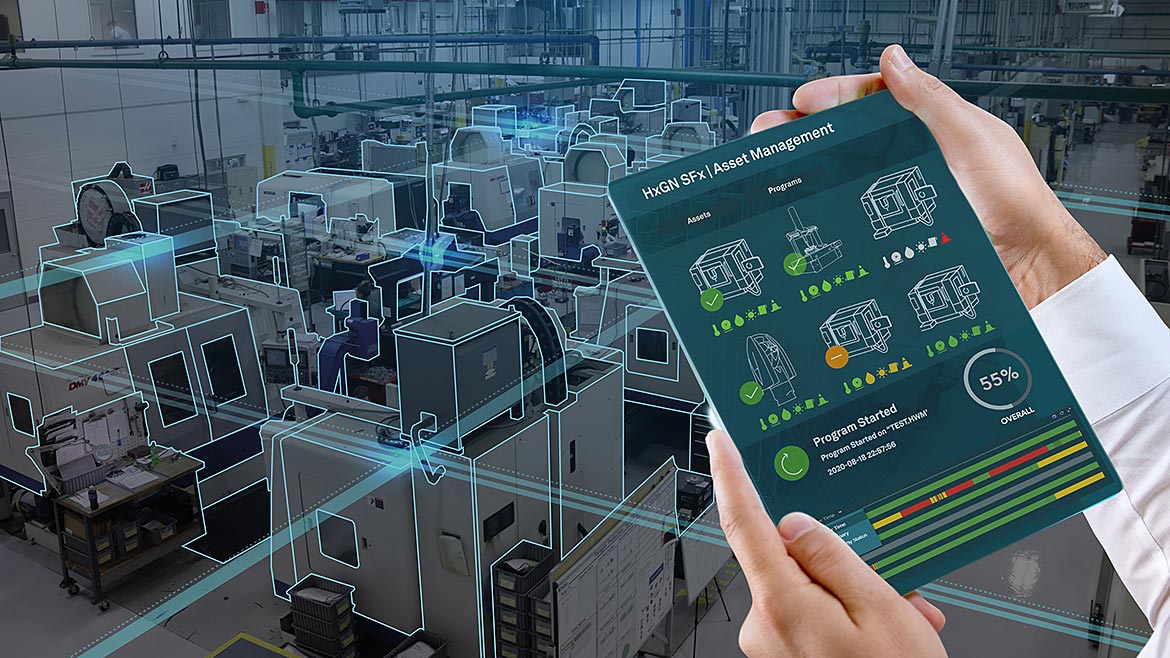
This provides access to machine performance metrics based on real-time data to assets such as machine tools, coordinate measuring machines and laser trackers. This technology allows manufacturers to easily monitor key assets of a single site or multiple factories around the world from a one centralized dashboard. Image Source: Hexagon Manufacturing Intelligence
In order to enhance the perceived value of the quality department, the ultimate goal of CMMs today must be viewed through a new lens. Simply put, the CMM’s main output was to provide a report that passes or fails an inspected part, and targets the areas in question that might need a second look. However, when connecting this information to other critical elements, CMM data provides even more value.
It is important to know when a part passes and fails. But it is even more important to understand the reasoning behind it, and then proceed to automatically adjust some of the processes to fix the issue without halting production. When connecting a CMM with technologies like asset management or statistical process control systems, manufacturers can enable faster (and sometimes automatic) action to be taken. For example, the same machine tool has been utilized to create a particular part for the past three months. When the next run is inspected by the CMM, the report starts to show a trend in which a particular part characteristic is starting to degrade in accuracy. This information can be fed back to the machine tool to automatically calculate the adjustments needed to ensure the inspection results return to the normal state. The manufacturer continues to get more use out of the machine tool, while the asset management system sends out alerts that the machine tool in question might need replacing soon.

